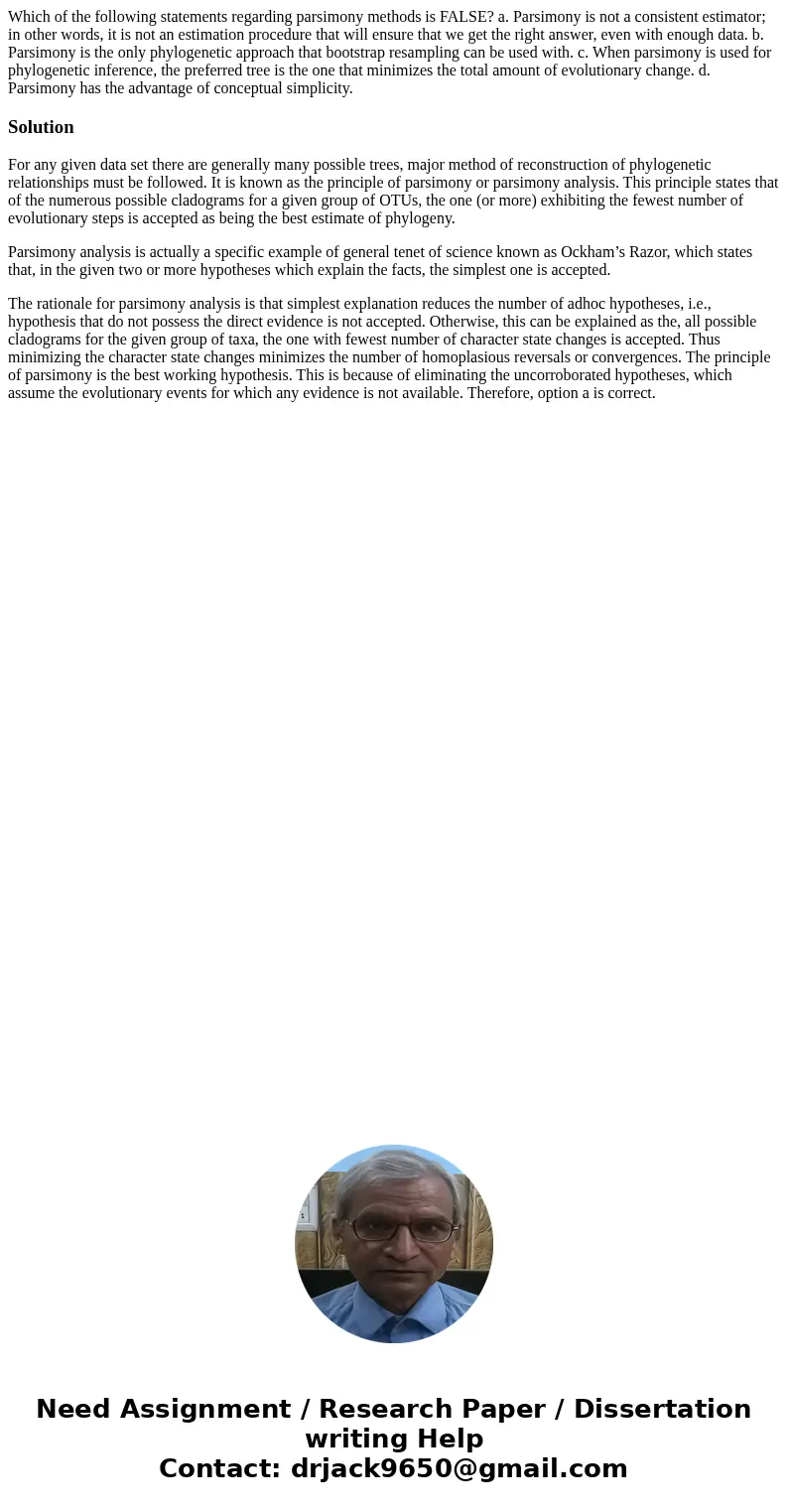Which of the following statements regarding parsimony method
Which of the following statements regarding parsimony methods is FALSE? a. Parsimony is not a consistent estimator; in other words, it is not an estimation procedure that will ensure that we get the right answer, even with enough data. b. Parsimony is the only phylogenetic approach that bootstrap resampling can be used with. c. When parsimony is used for phylogenetic inference, the preferred tree is the one that minimizes the total amount of evolutionary change. d. Parsimony has the advantage of conceptual simplicity.
Solution
For any given data set there are generally many possible trees, major method of reconstruction of phylogenetic relationships must be followed. It is known as the principle of parsimony or parsimony analysis. This principle states that of the numerous possible cladograms for a given group of OTUs, the one (or more) exhibiting the fewest number of evolutionary steps is accepted as being the best estimate of phylogeny.
Parsimony analysis is actually a specific example of general tenet of science known as Ockham’s Razor, which states that, in the given two or more hypotheses which explain the facts, the simplest one is accepted.
The rationale for parsimony analysis is that simplest explanation reduces the number of adhoc hypotheses, i.e., hypothesis that do not possess the direct evidence is not accepted. Otherwise, this can be explained as the, all possible cladograms for the given group of taxa, the one with fewest number of character state changes is accepted. Thus minimizing the character state changes minimizes the number of homoplasious reversals or convergences. The principle of parsimony is the best working hypothesis. This is because of eliminating the uncorroborated hypotheses, which assume the evolutionary events for which any evidence is not available. Therefore, option a is correct.

 Homework Sourse
Homework Sourse